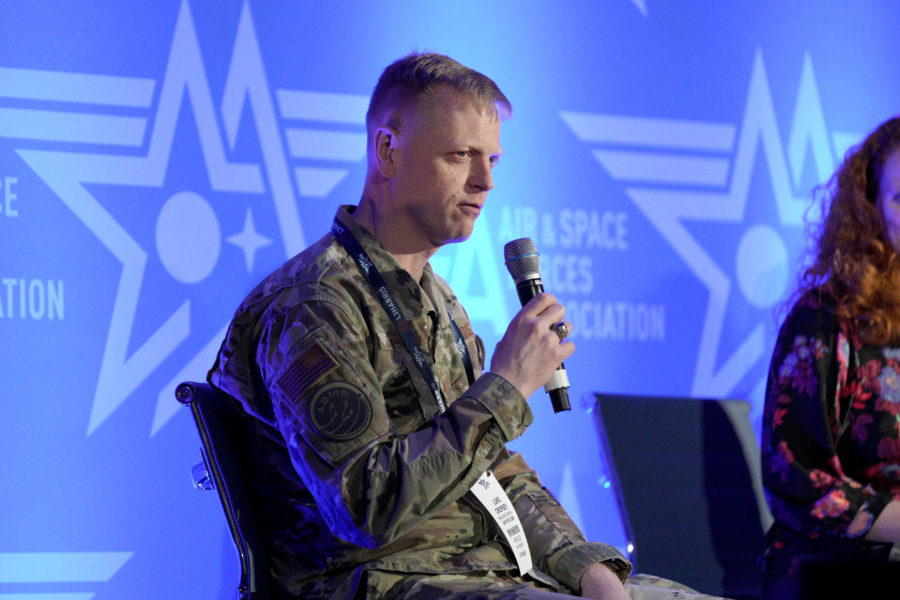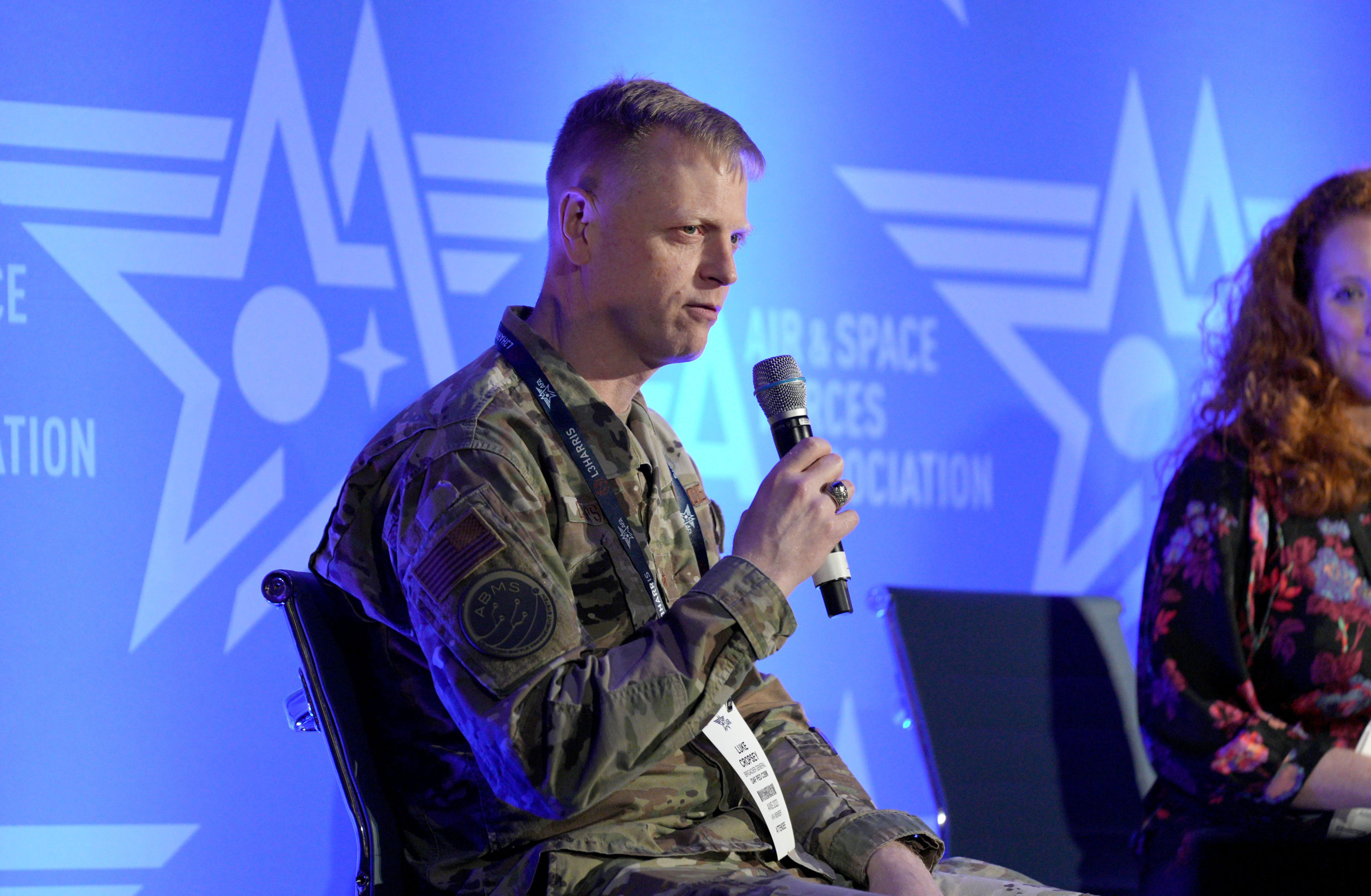
After years of planning, experiments, and discussion, the Department of the Air Force is ready to start modernizing its command, control, and communications capabilities now, the top general overseeing the effort said Sept. 11.
“The modernization of [C3] isn’t tomorrow, it’s today,” Brig. Gen. Luke C.G. Cropsey, integrating program executive officer for command, control, communications, and battle networks, told reporters at AFA’s Air, Space & Cyber Conference. “We’re deploying capability starting now. It will obviously continue to happen in the future. But this isn’t something that’s five years away. This is today. So we’re putting capability out in the field.”
Cropsey’s declaration comes two years after Air Force Secretary Frank Kendall first expressed concern that the Advanced Battle Management System, the department’s ambitious plan to connect sensors and shooters across the globe, was not focused enough on deploying operationally relevant capabilities.
Specifically, Cropsey said his team is prepared to declare initial operational capability for its Could-Based Command and Control (CBC2) network for U.S. Northern Command and North American Aerospace Defense Command next month. CBC2 will aggregate and integrate military and commercial air defense data sources into one common picture to support homeland defense.
Cropsey also said that before the end of the year, the Air Force will start fielding a new digital infrastructure needed to support new system architectures his team has been helping to develop for months.
CBC2
CBC2 was previously called Capability Release 2, intended to be the second deliverable product of ABMS. In the works starting in 2021, the system officially became a program in May 2022.According to an Air Force release, CBC2 fuses data from 750 radar feeds into a single interface and allows operators to create “machine-generated courses of action to help shorten the tactical C2 kill chain and send a desired effect via machine-to-machine connections.”
The system is replacing the Battle Control System-Fixed network and integrating data from other air and missile warning and missile defense systems. But rather than attempting to build one massive capability, Cropsey said his team chose to “thin slice” it.
“We didn’t do an overall CBC2 contract and hand it off to somebody that kind of did all the typical integration kinds of things,” Cropsey said. “We actually went directly to the experts in their respective layer of the stack, and we said, ‘Hey, who’s the best at ‘fill in the blank’ and we went and we got them on contract.”
One of the biggest contracts went to SAIC, which got $112 million as the software integrator for the system, “but we’ve got a lot of contracts all operating together on that CBC2 piece,” Cropsey noted.
The Air Force has referred to the various capabilities from those contracts as “microservice applications,” with an emphasis on regularly releasing updates.
That process, called agile development, security, and operations or DevSecOps in the software world, is one the Pentagon writ large has struggled to adopt, but Cropsey said his team and U.S. Northern Command are dedicated to making it work.
“The [combatant command] ponied up to giving us operational people, so for every microservice that we’re generating inside of the CBC2 architecture, we have literally a dedicated operational person with that team that’s generating that microservice,” Cropsey said. “So we’re actually generating the kind of user and development cycle that an agile process actually calls for. That may be the single biggest reason why CBC2 is moving as well as it’s moving.”
Given that success, Cropsey said he’s already started thinking about how to scale and implement CBC2 in other combatant commands and regions of the world.
Digital Infrastructure
For much of fiscal 2023, Cropsey said, his office has worked on the architectures necessary to enable modernized command and control—the connections and organizations needed for the Air Force’s ambitious plan to connect sensors and shooters around the globe. Leading that effort has been Dr. Bryan Tipton, C3BM chief of architecture and engineering.In recent months, Tipton and his team have delivered analyses to the Secretary of the Air Force on the architectures needed in air and space for modernized C2. The contents of those analyses are classified, Cropsey said, but a key underlying element is the digital infrastructure—the computing power, programs, and process necessary to make the architecture work.
“Regardless of where you’re going to fight, what you want to communicate, the data and the information that you need to flow through that system, if you don’t have a digital infrastructure to do it on, it’s a pipe dream,” Cropsey said.
The Air Force’s IT systems and computing power are often a source of frustration for the average Airman, but Cropsey projected optimism that the “DAF Battle Network” will have what it needs.
“We’re going to start putting digital infrastructure out into the field this year,” said Cropsey. “So, super excited about that. It’s fundamentally an enabler of anything that you want to actually do from a C2 perspective.”

Air Force C3 Modernization Czar: ‘We’re Deploying Capability Starting Now’
Brig. Gen. Luke C.G. Cropsey, integrating program executive officer for C3/BM, said the Air Force has started modernizing its C2.

